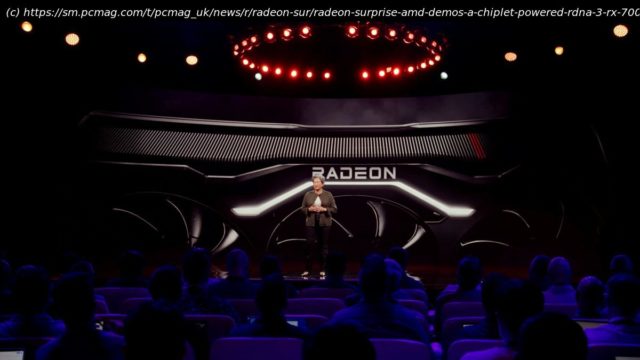AMD’s Radeon RX 7000-series graphics cards, based on a new and revolutionary chiplet design, may indeed be here as soon as this year, if a hint from CEO Dr. Lisa Su pans out.
AMD’s next generation of graphics cards is right around the corner, and they are promising to be revolutionary, regardless of whether they turn out to be performance leaders. That’s because the upcoming AMD Radeon RX 7000 series of graphics cards will be the first from AMD based on a chiplet design, according to comments made by Chair and CEO Dr. Lisa Su at the company’s Ryzen 7000 launch event today. She also reiterated, in passing, AMD’s launch date of later this year for the first of these next-gen graphics cards, which will be based on the coming RDNA 3 architecture and 5nm process technology.
If you’ve been following AMD’s Ryzen processors, you may realize just how significant the chiplet aspect of this tease is, and you should also know it’s something that could help to cut down the cost of the GPUs. Before we get down into the hints Dr. Su dropped, let’s get into a bit of context.
First, Some Background: Chiplets vs. Monoliths
Chiplet designs are not exactly new, but recently we have been seeing AMD and now Intel take them to new heights. Essentially, a chiplet design consists of two or more independent silicon chips that have been tightly coupled into a single package. As an illustration, see this image from Intel, which illustrates a conventional single-chip silicon package on the left and a silicon package with four chiplets in the center and on the right.
The use of chiplets is significant, as it can ease the development of different products and help to reduce production costs. When you create processors out of silicon, a small defect anywhere on the chip can cause the entire chip to be nonfunctional. This makes large chips that have larger areas more prone to such killer defects, and they are more costly to manufacture due to the added time and resources used in their production. In contrast, smaller chips can be cheaper to produce for the opposite reasons.
Let’s say, for example, you have one chip with an area of 20mm2.
Start
United States
USA — software Radeon Surprise: AMD Demos a Chiplet-Powered RDNA 3 RX 7000 Graphics Card






